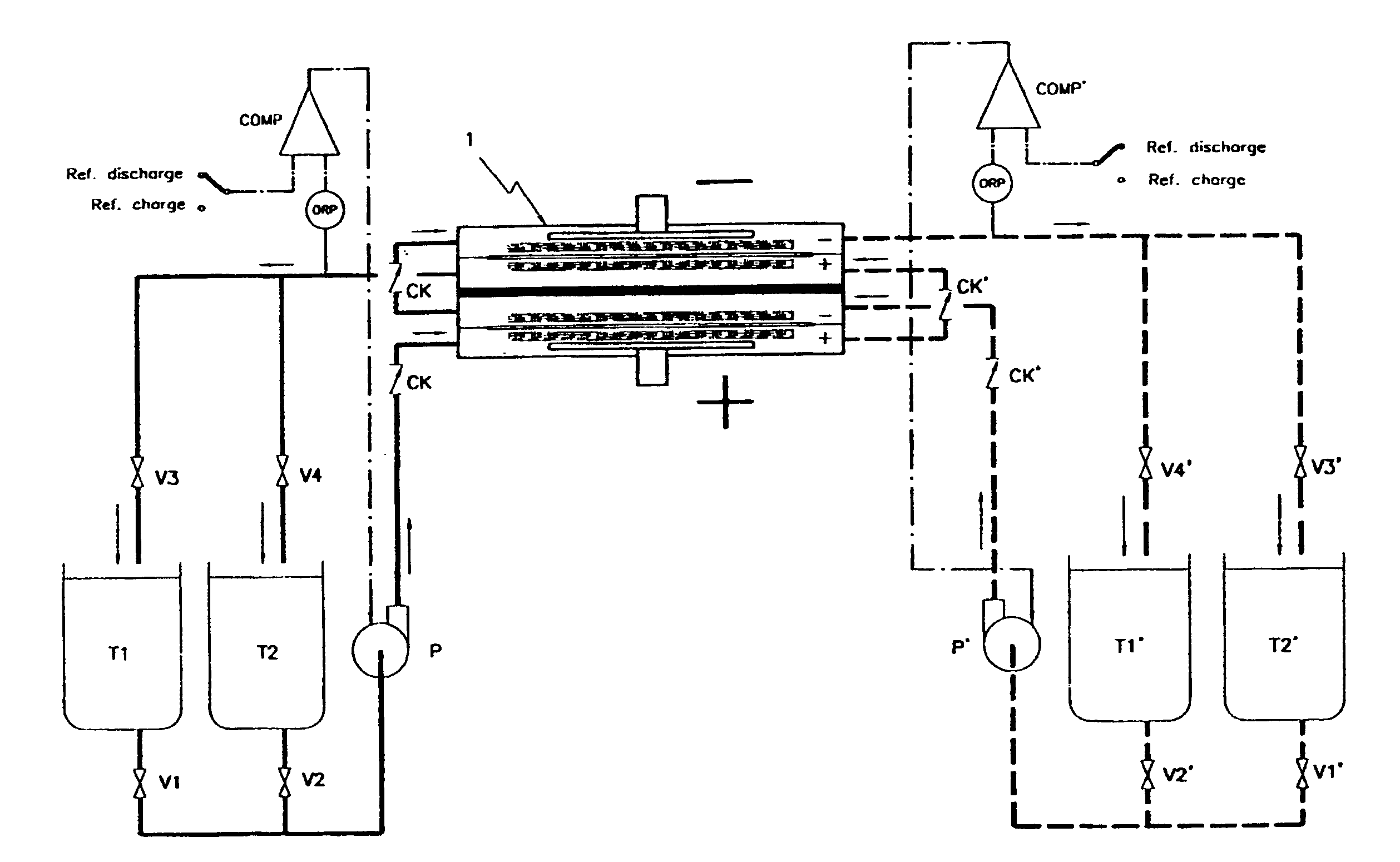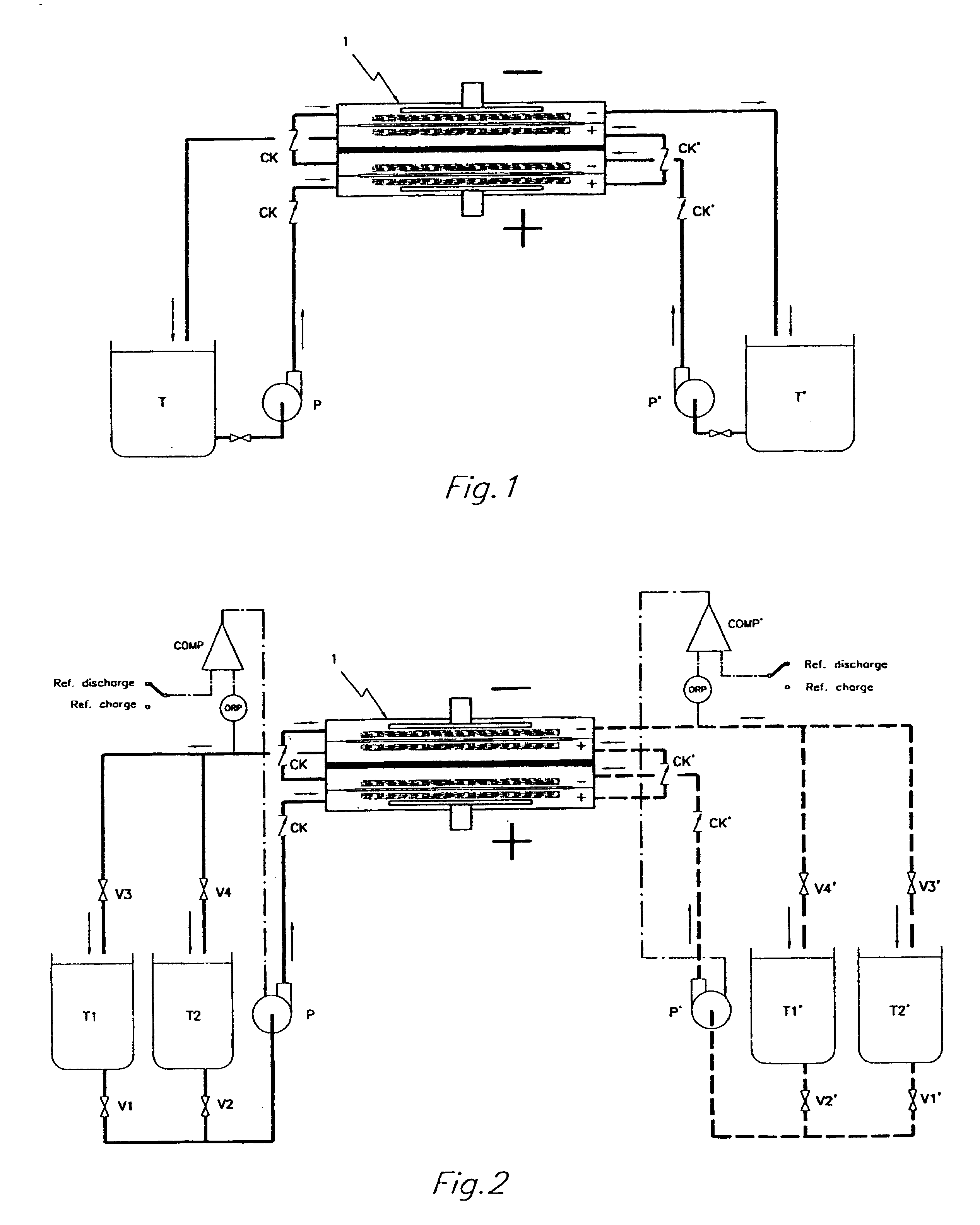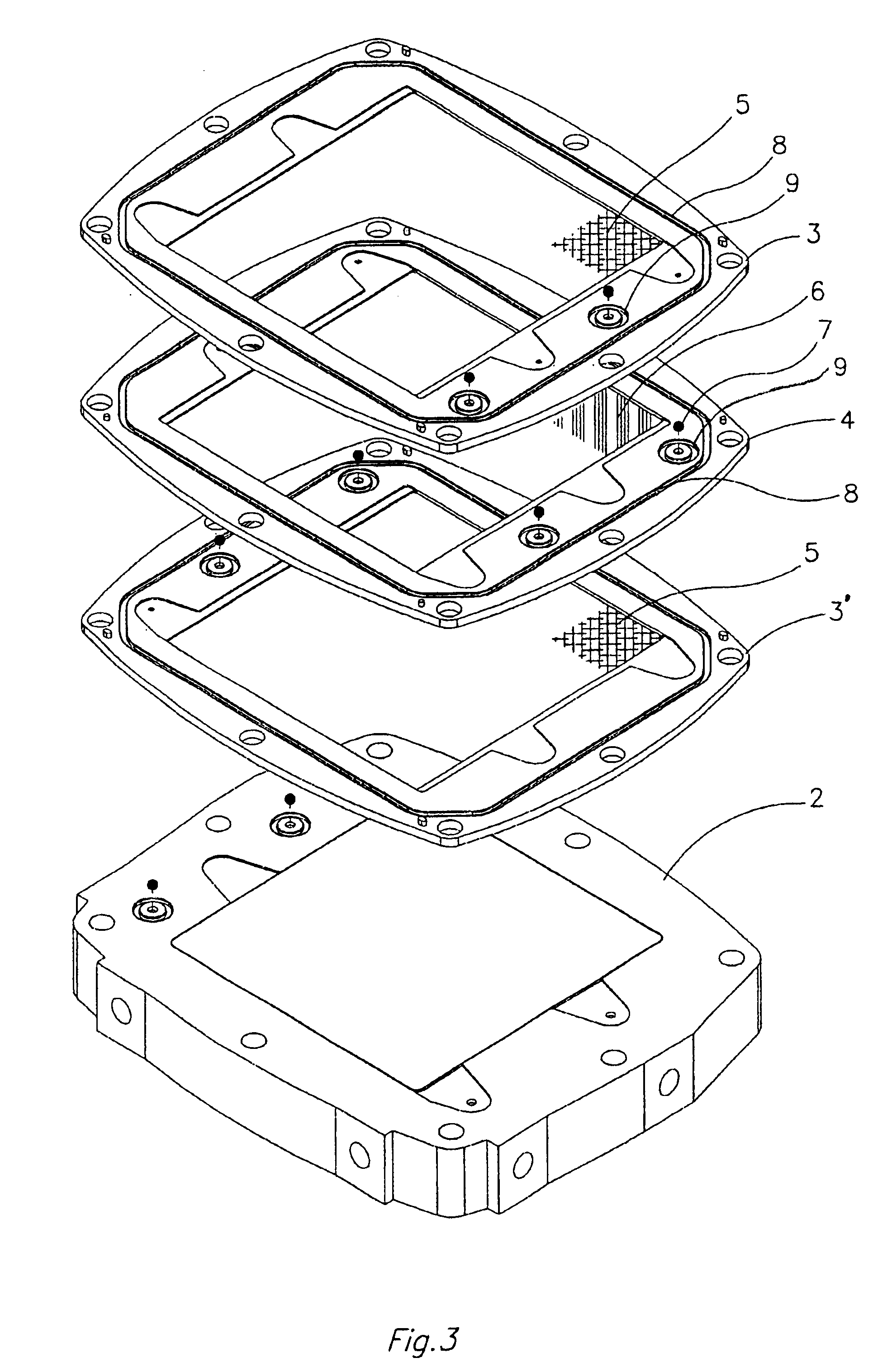Redox flow battery and method of operating it
a flow battery and redox technology, applied in the field of electrochemical reactors, can solve the problems of reducing affecting the overall efficiency of the charging and discharging process, and severe corrosion phenomena on conductive parts
- Summary
- Abstract
- Description
- Claims
- Application Information
AI Technical Summary
Benefits of technology
Problems solved by technology
Method used
Image
Examples
example
An all vanadium redox flow battery system according to a scheme as the one depicted in FIG. 2 and employing a battery stack composed of twelve cells in electrical series, each having carbon felt electrodes of 18.times.18 cm separated with a cation exchange Nafion.RTM. membrane, manufactured by Du Pont de Nemours, was considered fully charged when attaining a concentration of V.sup.+5 in the positively charged sulfuric acid electrolyte and a concentration of V.sup.+2 in the negatively charged sulfuric acid electrolyte above 90% molar of the total amount of vanadium dissolved in the sulfuric acid electrolyte.
The battery stack was first assembled without implementing any check valve in the inlet and outlet ports of the electrode compartments.
After charging it, the system has been left idle by stopping the pumps and opening the electric circuit.
The battery voltage at the moment of stopping the pumps and opening the circuit was of 17.1 V, but notwithstanding the absence of any electrical...
PUM
 Login to View More
Login to View More Abstract
Description
Claims
Application Information
 Login to View More
Login to View More - R&D
- Intellectual Property
- Life Sciences
- Materials
- Tech Scout
- Unparalleled Data Quality
- Higher Quality Content
- 60% Fewer Hallucinations
Browse by: Latest US Patents, China's latest patents, Technical Efficacy Thesaurus, Application Domain, Technology Topic, Popular Technical Reports.
© 2025 PatSnap. All rights reserved.Legal|Privacy policy|Modern Slavery Act Transparency Statement|Sitemap|About US| Contact US: help@patsnap.com



